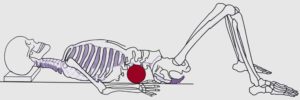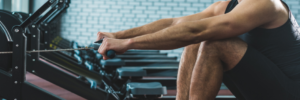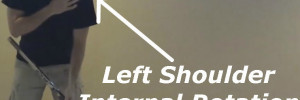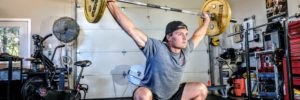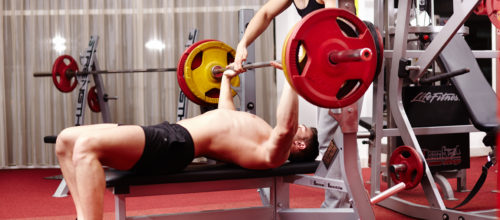
Bench Pressing Around a History of Mechanical Low Back Pain
Recently, one of my social media followers on Instagram had a question about what bench press technique he should assume considering he has had a host of lower back problems including a herniated disc. Here was this fellas question:
“I had my share of back injuries in the past including an L5-S1 herniated disc (posterior). Got myself a back mechanic _______________ and saw a McGill method provider. Everything is coming together great now and starting to get back into strength training.
My question is as following and I hope you are willing to answer it. What do you recommend for the bench press position considering my lower back… Feet raised in the air back flat on the bench or regular position with feet on the floor and a slight arch in the back?
Thanks in advance for answering my question.“
And here was my response to this fellas question:
“Hi, ___, glad to hear everything is coming together with regards to your back issues. That’s always encouraging to hear 
As per your question regarding back position on the bench press… I think it depends on what triggers your low back pain and what your issues may be. From what you’ve told me, I’d probably lean towards a regular position with a slight arch in the low back as long as you don’t have any existing extension based low back issues.
I think a regular position with a slight arch in the low back would be best, but it depends on how you respond to it since anytime you alter the mechanics of the lumbar spine you never know how it may react for someone with an existing disc issue.
As long as it doesn’t cause pain and your not hyperextending the low back as a powerlifter may do, I think you should be okay 
Bench Press Technique
When it comes to bench press technique or any exercise technique for that matter, everyone is going to be different in their set-up and execution, especially for someone with a history of lower back issues.
Speaking from my own experience, I found the bench press to be one of the more spine-friendly exercises for myself. Assuming a supine position and pushing weight is a pretty spine-friendly position since there is no real risk of falling into lumbar spinal flexion under load. The only primary concern I would have is if an individual (other then a powerlifter) were hyperextending their low back on the bench press, as this could potentially lead to some extension based low back issues down the road.
For someone with an existing disc issue (assuming it’s posterior) that is symptomatic, encouraging more of a flat back posture by posteriorly tilting the pelvis on the bench press (feet elevated) probably wouldn’t be something I encourage (Figure 1). Posteriorly tilting the pelvis and flattening the low back will encourage more of a “flexed” lumbar spinal position, which could trigger our fellow’s existing disc issue to become symptomatic. That’s exactly what the feet elevated bench press may do (Figure 1).
However, for someone with previous extension based low back issues and sits in an excessive anterior pelvic tilt, then the feet elevated bench press may be a good option for them. By encouraging a posterior pelvic tilt (Figure 1), this will make it harder for one to slip into any lumbar extension that may aggravate previous symptoms.
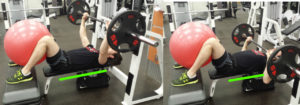
Figure 1:The above photo represents a bench press technique that involves elevating the feet above the ground. This technique encourages a posterior pelvic tilt and makes it more difficult for one to slip into lumbar extension. The stability ball squeezed between the legs is a bracing technique that helps stiffen the spine, and is a stabilizing method I learned from physical therapist Alex McKechnie. This may be a good option for someone with previous extension based low back issues.
In my opinion, sticking to a normal lordotic curve or arching the low back slightly during the bench press would potentially be the most optimal for our fella with the posterior L5-S1 herniated disc (Figure 2). The slight arch encourages an anterior pelvic tilt, which “may” prevent the herniated disc from possibly put putting pressure on an exiting or traversing nerve root. Note: For most people, I’d generally recommend this technique below.
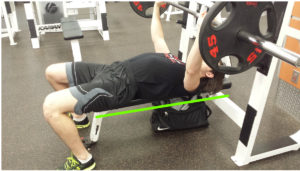
Figure 2: The above photo represents a “normal” bench press technique that involves slightly arching the low back. The key would be to squeeze the glutes, engage the lats and stiffen the core to help maintain good spinal position, as well as produce maximal force.
Thoughts on Hyperextension of The Low Back During the Bench Press
Unless your involved in the sport of powerlifting or are looking to set “new” personal records for your own sake, then I wouldn’t recommend hyperextending the low back on the bench press.
The reason powerlifters hyperextend the low back (similar to the photo below but without the butt coming off the bench) is to reduce the amount that the bar has to travel, and this involves shortening the working levers. This is a good option for someone looking to maximize weight pushed on the bench press, but it’s also the position that the lumbar facet joints are loaded the most during compression (Schendel, Wood & Buttermann, Lewis & Ogilvie, 1993).
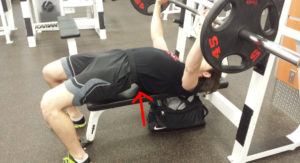
Figure 3: The above photo represents poor technique on the bench press exercise and is sometimes assumed by individuals attempting to push maximal loads. Lumbar hyperextension on the bench press is not a technique I’d recommend for someone with a history of extension based low back issues, is an athlete predisposed to extension based issues or is someone that is just trying to prevent low back issues from developing. Also, with the butt coming off the bench, this would not even be considered a legal bench press for powerlifting.
An athlete involved in a sport that involves repetitive motions of lumbar extension (e.g., hockey, basketball), I would not recommend this technique considering these individuals tend to be at risk for developing extension-based back issues. Assuming this bench press technique repetitively over time may only speed up the onset of some extension based low back issues (e.g., facet joint osteoarthrosis, spondylolysis) that some athletes may be prone too.
At the same time, athletes such as basketball or hockey players are NOT powerlifters and therefore, don’t need to bench press like a powerlifter. Basketball and hockey athletes are primarily judged on their athletic performance, and their bench press scores tend to be of little to no importance.
An important thing to remember.
Slaute,
Remi
References
Schendel, M. J., Wood, K. B., Buttermann, G. R., Lewis, J. L., & Ogilvie, J. W. (1993). Experimental measurement of ligament force, facet force, and segment motion in the human lumbar spine. Journal of Biomechanics, 26(4-5), 427-438.
Thumbnail Image Licensed from “Xalanx/depositphotos.com”

